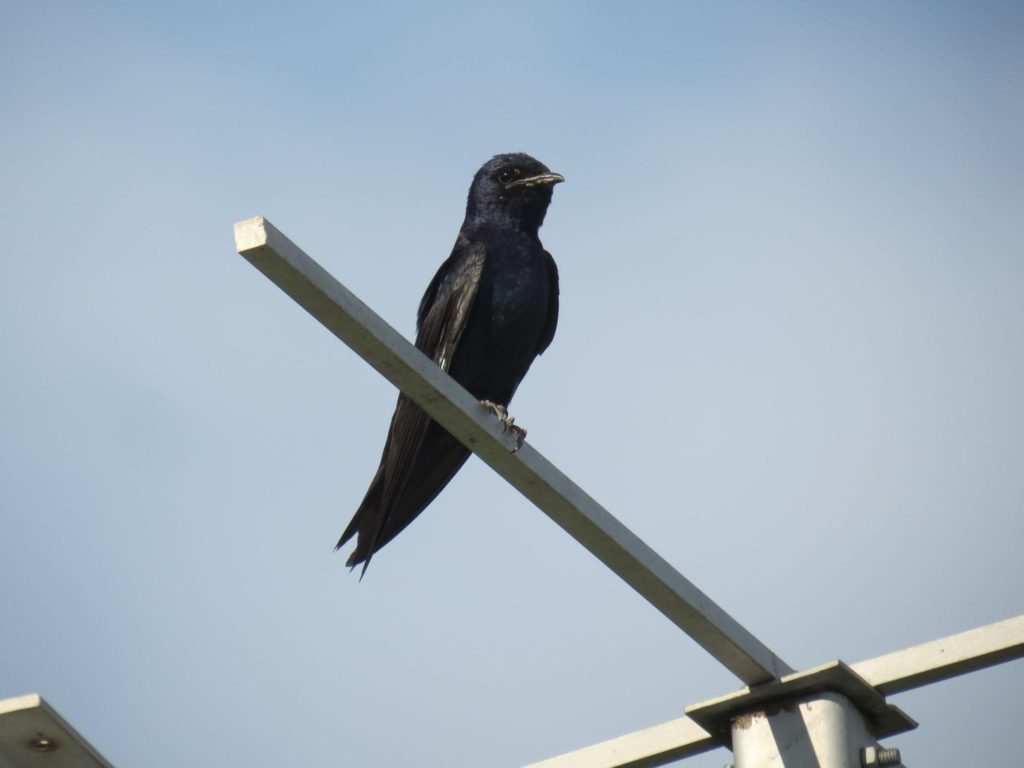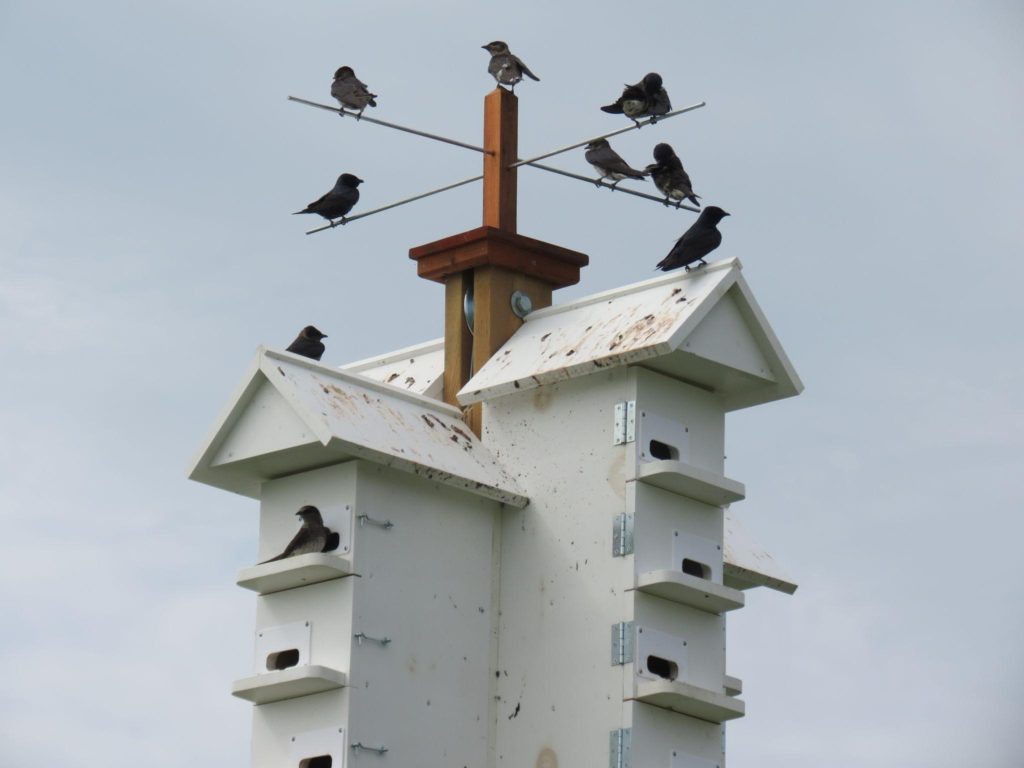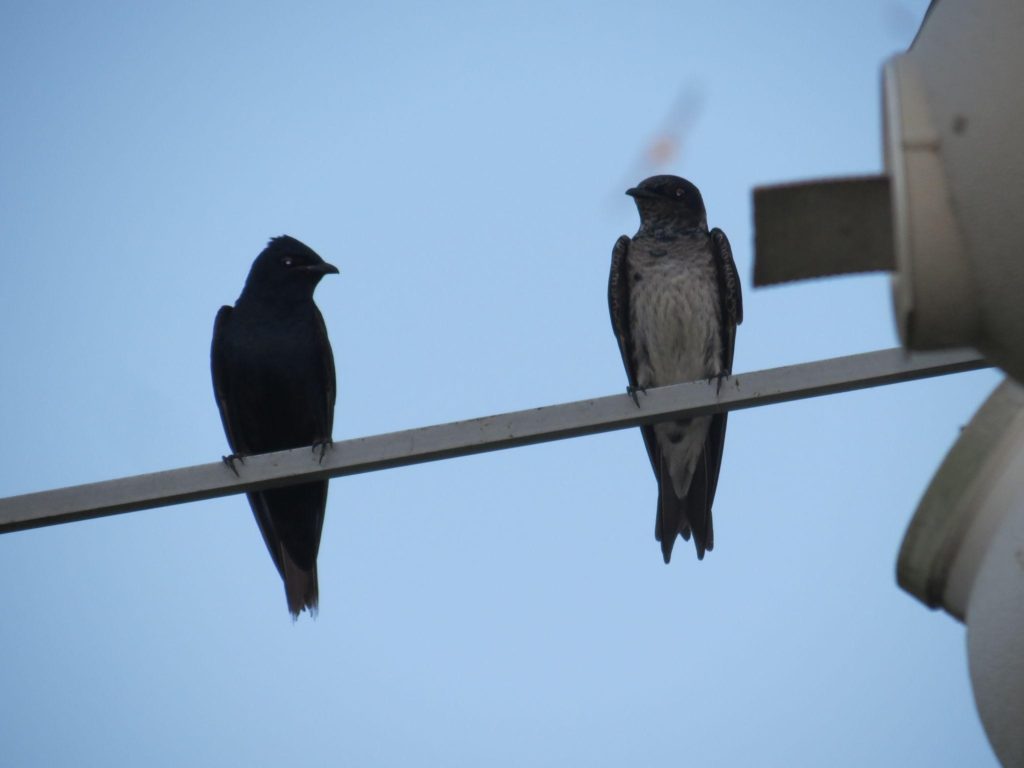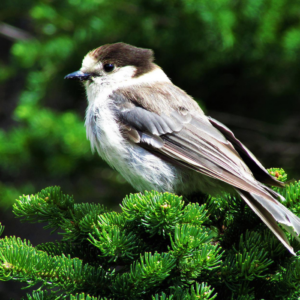Why Won’t the Government Follow Its Own Laws to Save Our Swallows?
Few birds can match swallows in their aerial prowess. They dart and swirl through the sky with unmatched agility. Their flying abilities enable their epic annual migrations to South America, but they also explain what they do best, catching flying insects in mid-air.
Swallows in Canada
Canada has seven regularly occurring breeding species of swallows. Violet Green Swallows are restricted to western Canada, while Bank Swallows, Barn Swallows, Cliff Swallows, Tree Swallows, Northern Rough-winged Swallows and Purple Martins have cross-country ranges.
Swallows return to Canada to feast on flying insects such as midges, mosquitoes, dragonflies, moths and beetles, which emerge from April to July. Most of these insects have complex life cycles involving aquatic larval stages and adult flying stages.

Swallow Populations Need Our Help
Insect populations are suffering from pesticides and other pollution (mainly affecting aquatic larvae). Unfortunately, as flying insect populations decline, so do swallow populations.
Canadian swallows have lost significant portions of their populations, in most cases over 50 percent, and in the case of the Bank Swallow, 95 percent over the past 50 years. Barn and Bank Swallows are now listed as Threatened under the Species at Risk Act (SARA).
The swallows need our help. However, all too often, these birds face additional stress from humans: direct disturbance of birds and nests, habitat loss, and other impacts. Swallows are in big trouble and human encroachment is making a bad situation worse.
Recent Examples of Human Disruption
Every year we hear of people intentionally harming swallows by disrupting their nesting activities. Recent examples include:
- Bank Swallow colonies destroyed in sand pits or by housing developers;
- Barn Swallow nests being destroyed by inconvenienced boat house owners;
- Adult Swallows being locked out from active nests in an airplane hangar by airport authorities;
- A proposed auto racecourse near Rosebud east of Calgary threatens a large colony of Federally Threatened Bank Swallows.
In some of these cases, the Canadian Wildlife Service took enforcement actions under SARA, because threatened Bank and Barn Swallows are protected under that law.
Populations of Purple Martin, Tree Swallow, Rough-winged and Violet Green Swallow are also in rapid decline even though they are not yet listed as species at risk. But they are still protected under another federal law—the Migratory Birds Convention Act (MBCA). The Act prohibits hunting without a permit, and hunting is defined to include harassment even if no injury is caused to the bird.

Clear Violations Without Consequences
Over the past several years (with two incidents just this month), Nature Canada has been contacted by concerned citizens who have witnessed the destruction of swallow nests or actions taken against swallows that clearly violate the MBCA.
When reported to the authorities, the response from federal officials raised serious doubts about their commitment to enforcing this law as a tool to save our swallows and other migratory birds.
In one case, when a Purple Martin steward reported the harassment of a Purple Martin colony in Eastern Ontario, a Wildlife Officer’s response was to provide the concerned citizen with guidelines on how to deal with nuisance geese and gulls. My most generous response to this action would be wondering “what were they thinking?”
More broadly, Nature Canada’s experience is that enforcement of the MBCA is not a government priority at all. We take for granted that wildlife protection acts will safeguard species in decline and prevent them from becoming endangered or going extinct. But how can they when the government won’t enforce its own laws?
Enforcement is Urgently Needed to Save Our Swallows
Swallows and other aerial insectivores are clearly in decline according to the 2019 State of Canada’s Birds report—a resource which is a collaborative effort of Canadian Wildlife Service, Nature Canada and other nature groups.
A key principle of conservation is to intervene to safeguard wildlife populations, and support their recovery, well before they near extinction! The Migratory Bird Convention Act should protect all of Canada’s migratory bird species. Action is needed in at least three key areas:
- We need to educate Canadians that harassment and hunting of migratory birds by non-Indigenous people without a permit is unlawful.
- We need to ensure governments have adequate resources to enforce the law when there are violations.
- We need public officials to take their obligations under the Act seriously and enforce the law to safeguard migratory birds.
Canadians should not have to wait for a species to be listed on the Species at Risk Act for protection to be taken seriously.

How We’re Taking Action
Nature Canada commits to doing our part to educate Canadians through our World Migratory Bird Day activities and programs such as Bird-Friendly City which helps reduce bird hazards in Canadian municipalities. Nature Canada also expects governments to do their part, by more rigorously enforcing the Migratory Birds Convention Act.
Subscribe to our Save our Swallows list to get updates on actions you can take to help birds in your backyard!



